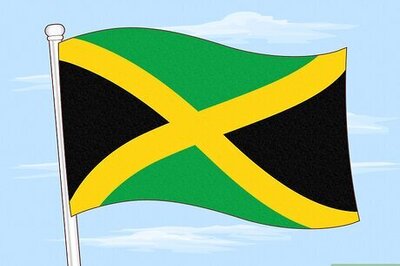
views
Meeting the Donation Requirements

Get your doctor’s consent before donating breast milk. Schedule a regular wellness checkup with your doctor to see if you’d be a good donor. A medical professional can confirm if you’re in good health or not, and let you know if you qualify or not.Tip: Don’t be discouraged if you can’t donate milk! You can always donate money to a milk bank, which can help them expand their resources.

Be able to safely produce and donate at least 100 fl oz (3,000 mL) of milk. Since there’s a large demand for milk, you need to be able to offer a substantial amount when you donate. If you’re worried that you don’t have enough milk on hand, consult a doctor for advice. You’re welcome to donate more than 100 fl oz (3,000 mL), if you’re able!

Find a well-established donation group to work with. Get in touch with a member of a well-reputed organization, like the Human Milk Banking Association of North America (HMBANA) or Mothers’ Milk Bank. Look over their online application or call a representative to see what the main requirements are, so you can get a basic feel for the screening process. If you live in Europe, contact the European Milk Bank Association to see if you could be a potential candidate. Check HMBANA’s website to see if you live near a milk bank: https://www.hmbana.org/find-a-milk-bank/overview.html. Some organizations may have a pre-screening process, or may send you a form to fill out.

Follow the designated screening process with the milk bank. Once your application is approved, follow the provided instructions to start your screening process. Some organizations may start with a phone interview, while others may have a different process. All groups ask you to have a blood test, so they can make sure you’re a good candidate.

Check your medical history to make sure you qualify as a donor. As you fill out the application paperwork, note any medical conditions or issues you’ve had, whether they’re large or small. These can range from nursing a baby with thrush, to having an intimate partner with HIV. Any medical issue may impact your ability to donate, so be sure to note it on your screening paperwork, or in your screening interview. For instance, if you smoke or drink regularly, you won’t qualify as a donor. Some medical procedures may disqualify you from being a donor, like an organ transplant or blood transfusion. During the screening process, be sure to share what medications or vitamins you’re taking. Some pills or prescriptions may disqualify you from being a donor. Severe diseases, like cancer, MS, HIV, or Hepatitis will disqualify you as a donor.

See if your travel history disqualifies you from donating. Double-check your passport to see if you visited any high-risk areas, or any place that may somehow impede your ability to donate. If you’ve lived or traveled in certain countries, you may not be eligible to donate. For instance, if you visited parts of Europe or the UK for over 3 months between 1980 and 1996, you’re not able to donate milk.

Provide the required blood sample requested by the milk bank. The donor organization will take a blood sample and analyze it before officially approving you as a donor. Even if your doctor provided written consent validating your health, it's standard procedure for the organization to screen your blood themselves just to confirm you don't have HIV, HTLV, hepatitis, and syphilis. Some organizations may help cover any fees for the blood test. You may also be asked to submit a sample of your breast milk for analysis.

Wait for official approval from the donation organization. Fill out any other forms or tests that the donation group sends you, and wait for your results. Keep in mind that the organization may ask to collect your DNA with a swab, or send you a kit in the mail to collect your samples. Once you’re approved, you can start pumping and submitting your milk for donation.
Pumping and Packing the Milk

Wash your hands before expressing your milk. Rub your hands with soap and rinse them in warm water for 20 seconds. Once your hands are clean, dry them off completely. It’s important that your milk donation be as sterile as possible.

Clean off your nipple and breast with gentle soap. Wet a cloth with warm water and a pea-sized amount of mild soap, then wipe off your nipples. After this, wipe the surrounding skin so your entire breast is clean. Be sure to dry off the area with a clean towel or rag afterwards.

Collect your milk using a pump. Connect the pump to your nipple and express as much milk as you can. Most milk banks ask for a specific amount, like 150 fluid ounces (4,400 mL), so make sure you collect as much as you can!

Transfer the milk to a clean milk storage bag or other sanitized container. Make sure to leave a ⁄2 in (1.3 cm) gap at the top of the storage bag, in case the milk expands later on. If you don’t have milk storage bags on hand, you can also use another kind of sanitized container, like a glass jar. You can sanitize a jar by placing it in boiling water for at least 5 minutes. You can purchase milk storage bags online, or at a baby supply store.Warning: Always wash out your pump after you’ve used it, especially if you plan on donating milk in the future. This is ensures that your milk is clean, sanitary, and safe for a baby to drink in the future.

Label the bag with your donor ID and the date you pumped the milk. Double-check any information or pamphlets sent to you by your local milk bank, like a document that approves your application to be a donor. Find your donor ID number and write it on the container, so the milk bank officials know who the milk belongs to. Additionally, jot down the date you pumped the milk. You can also write the info on a label, then transfer the label to your milk bag or container.
Storing and Submitting Breast Milk

Refrigerate your milk if you plan on donating it right away. Place your bagged or jarred milk in the freezer or refrigerator within a half hour, or else it may start to go bad. Note that milk can stay fresh in the refrigerator for up to 1 day, but then has to go in the freezer. This is a good option if you plan on donating your milk the next day.

Freeze your milk if you aren’t donating it immediately. Store your milk container in the freezer within 30 minutes so it doesn’t begin collecting bacteria. You can leave your milk in the freezer for 3-4 months, but ideally, you should donate the milk before it reaches that threshold. If your milk is in a “deep freeze,” or frozen between −30 and −50 °C (−22 and −58 °F), you can store it for 7 months.

Drop your milk off in person at a donation center. Find a milk bank that’s within driving distance of your home. Double-check their website to see what their hours are, then drop off your bags or containers of milk during that time. Use a cooler or dry ice to transport your milk so it stays chilled and fresh. If you have specific questions about the drop-off process, contact the specific milk bank that you’re working with.

Mail your milk with dry ice if you don’t live near a center. Place a Styrofoam canister inside a large cardboard box. Once you’ve done this, stack a few packages of dry ice on the bottom. Place all the milk you plan on donating on top of the dry ice so it stays cold. Be sure to seal and label the box with a “Dry Ice” label along with the milk bank’s address, which lets the post office know what kind of package is inside. Try to ship your milk to the closest possible milk bank.



















Comments
0 comment